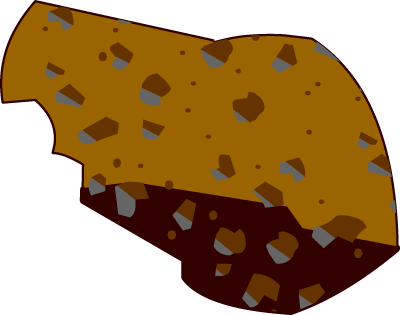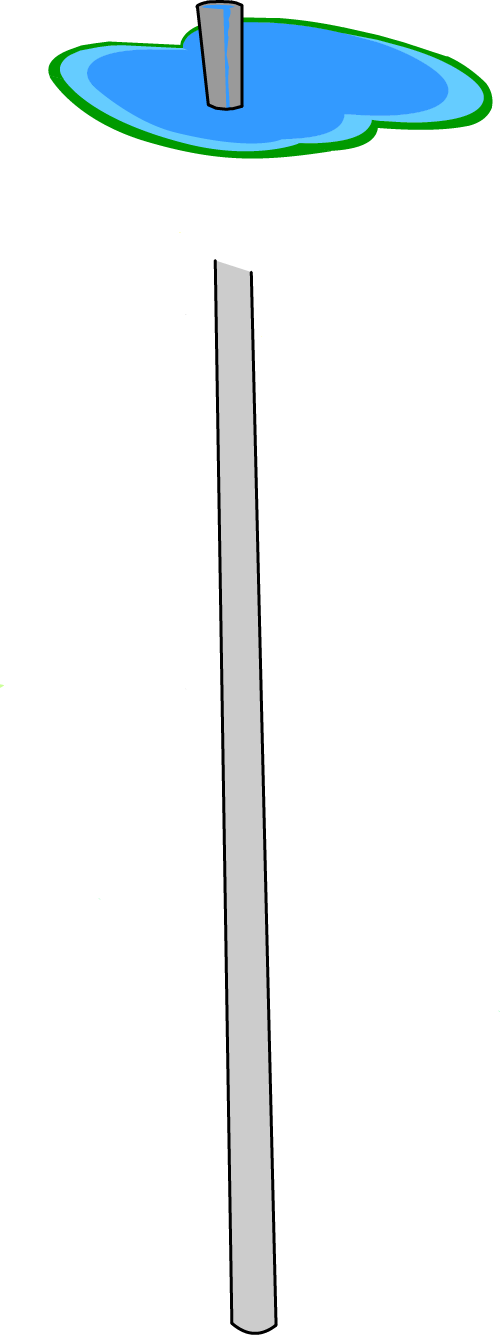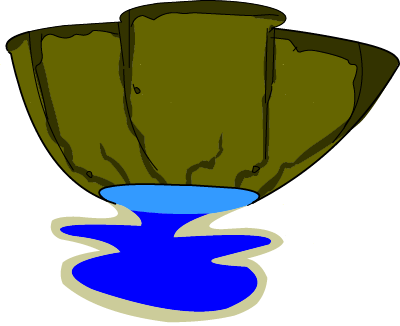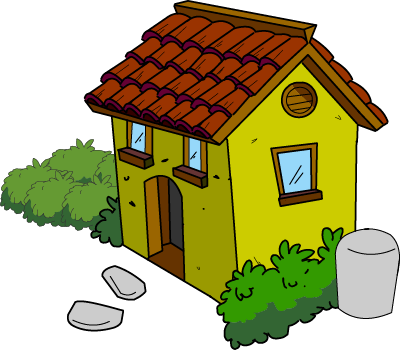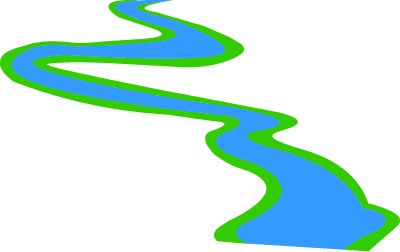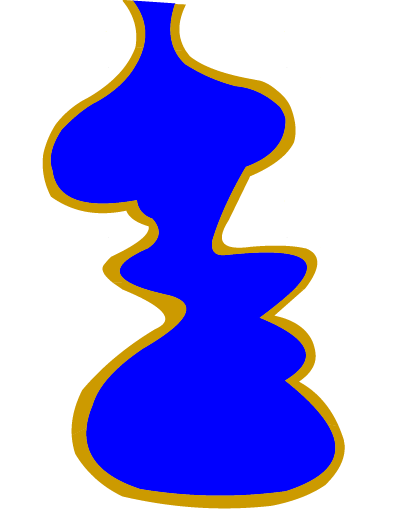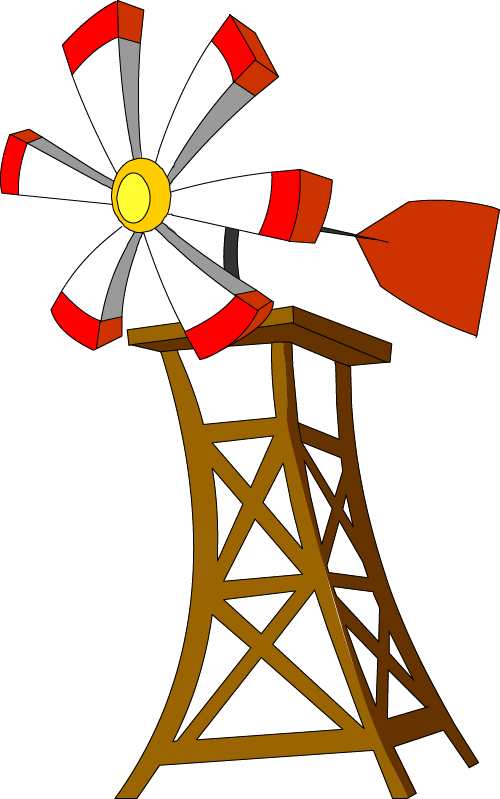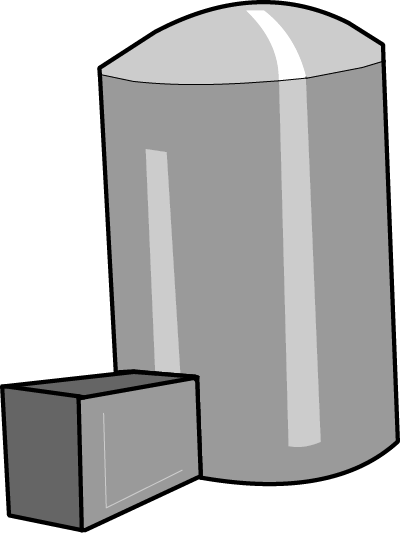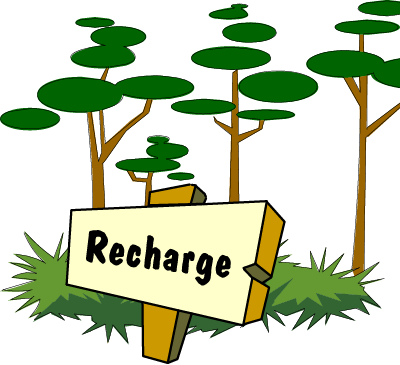Aquifer Adventure
Water on Earth is found either above or below the ground. Water above the ground is called surface water. You know, oceans and lakes and rivers. Water below the ground is called groundwater, and that’s what we’ll be talking about here. Click around to find out more about aquifers and see if you can find all 16 clues.
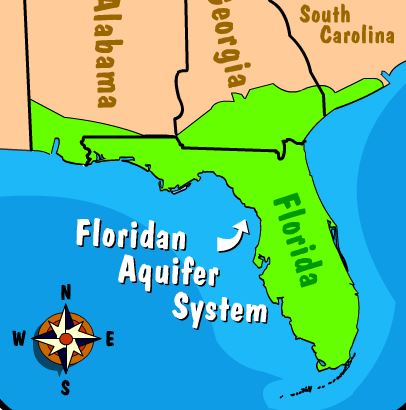
Flag
The Floridan aquifer is one of the largest aquifers in the United States. It extends across Florida and through parts of Georgia, Alabama, and South Carolina, but not Kansas.
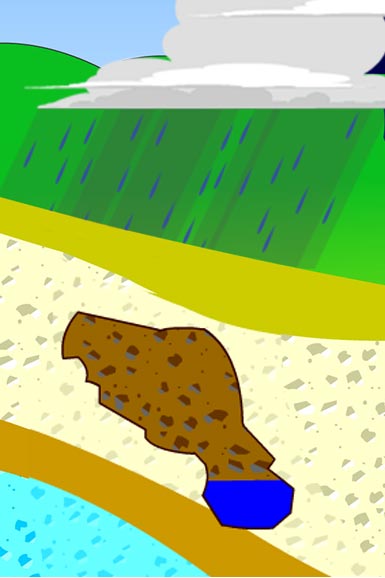
Underground cavern
As rainwater percolates down, or seeps into the aquifer, natural acids in the rainwater wear away the limestone. When this occurs, large cracks and tunnels are formed in the limestone. The very slow moving water in the aquifer has the power to wear away parts of the Earth. This takes place in the limestone of Florida over hundreds of thousands of years. Most of the major caves of the world were created by this same kind of erosion.
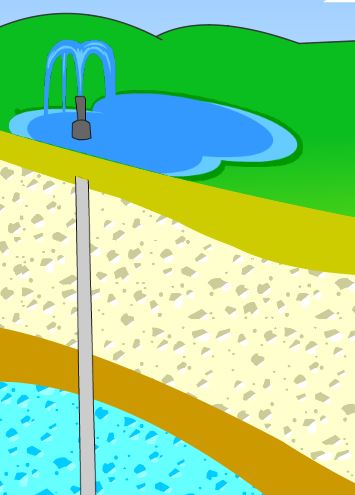
Artesian well
A free-flowing, or artesian, well is different from a regular well in that it doesn’t need a man-made pump to force the groundwater to the surface. Instead, free-flowing wells are drilled directly into the aquifer and the artesian pressure is high enough to make the water rise without using a pump. This artesian pressure is a natural pushing force created when rainwater refills the aquifer, causing the water level to rise on its own.
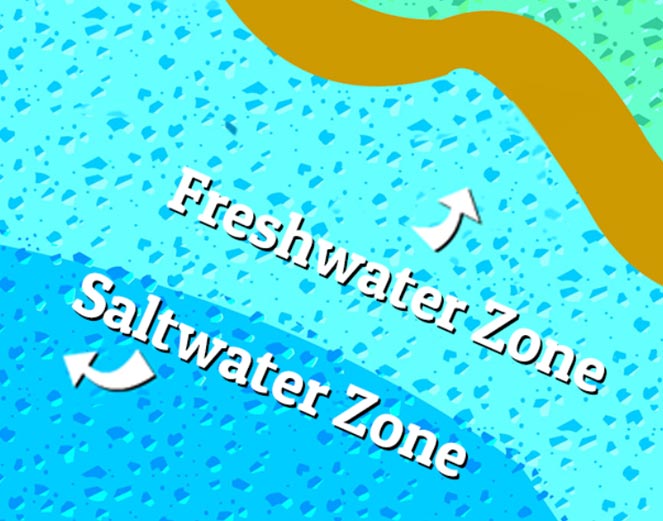
Aquifer zones
Above and below the Floridan aquifer are also various layers of water. Some layers contain freshwater, others contain salt water. These layers are called zones.

Truck
Scientists collect information to determine which regions of Florida are high- and low-recharge areas, the direction of groundwater flows, and how the aquifer is affected or changing. They do this by drilling wells deep into the ground and into the aquifer. The well levels are measured to tell about changes in the aquifer.
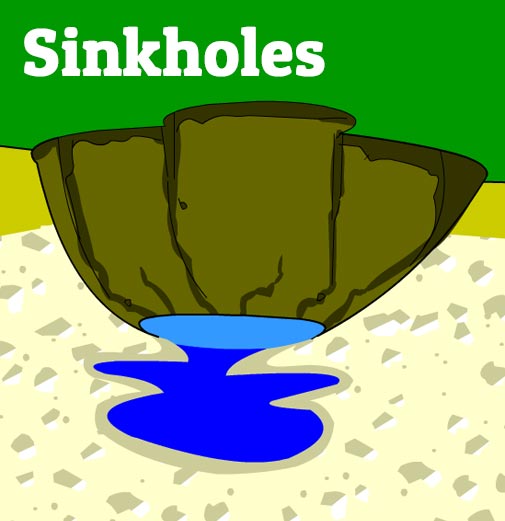
Sinkhole
A sinkhole is a hole or depression in the ground caused by the wearing away of underground limestone. Although only a few sinkholes occur in Florida each year, more sinkholes appear here than in any other state. Many natural sinkholes can’t be prevented. However, those caused by human activity can be avoided.
During droughts, or times when it’s dry, water tables drop in the limestone and cavities. This can help cause sinkholes to form. Practicing water conservation can help keep water tables high and prevent human-caused sinkholes.
Sinkholes take a very long time to develop but can appear suddenly with no warning. In March 1998, a drilling company was drilling an irrigation well when a massive sinkhole began to open up. When the sinkhole finished forming, it measured 150 feet wide and 15 feet deep.
Shortly after this event, more than 700 sinkholes formed in the surrounding area. Each year in Florida, additional sinkholes form; many of Florida’s lakes are actually old sinkholes that have filled in with soil and water.
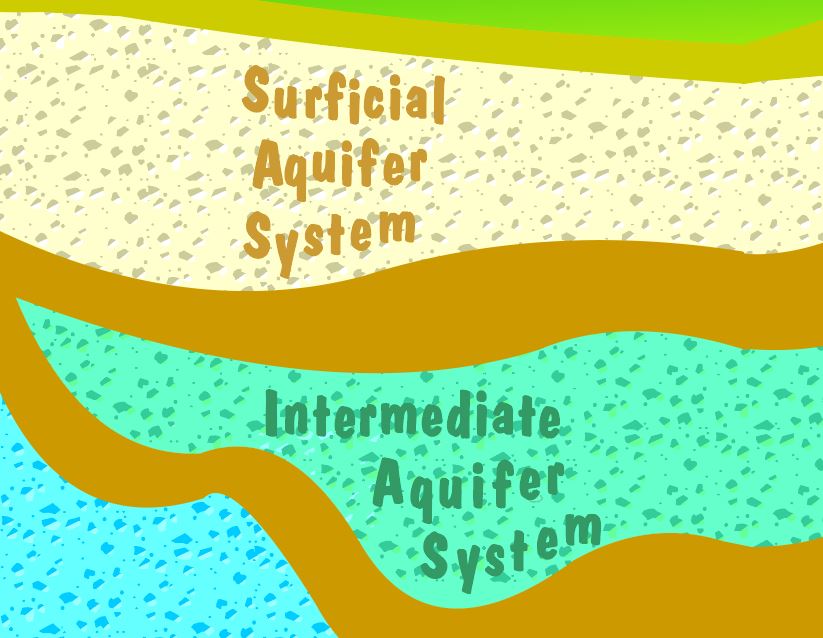
Intermediate aquifer systems
Above and below the Floridan aquifer are layers of sand, clay or gravel, which also hold water. These layers are known as surficial and intermediate aquifers.
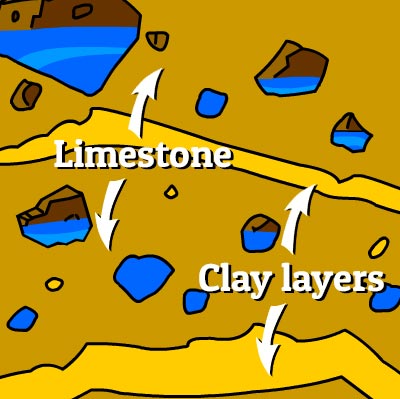
Floridan aquifer systems
The Floridan aquifer has many layers of clay above and below it to help keep freshwater in the aquifer. The Floridan aquifer is made mostly of limestone. Limestone is a type of rock that may have many holes, or empty spaces, in it. Water fills these empty spaces and slowly flows through the aquifer.
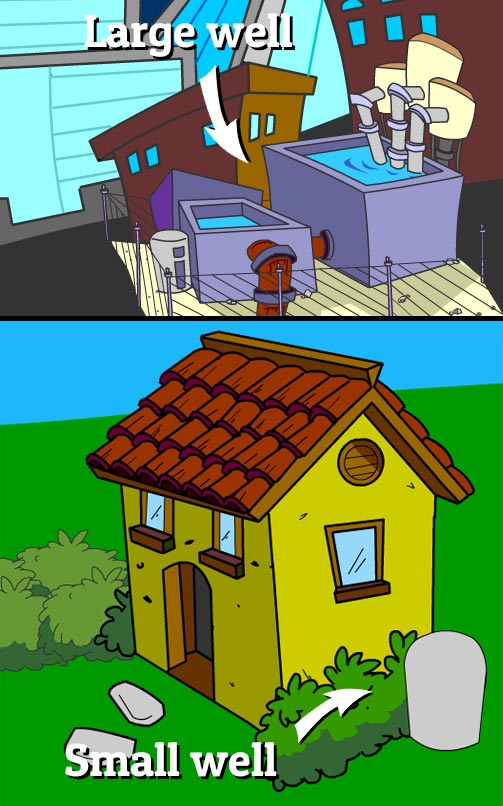
House
Wells come in all sizes. Large ones provide enough water for cities and towns. Smaller wells provide only enough water for individual families.
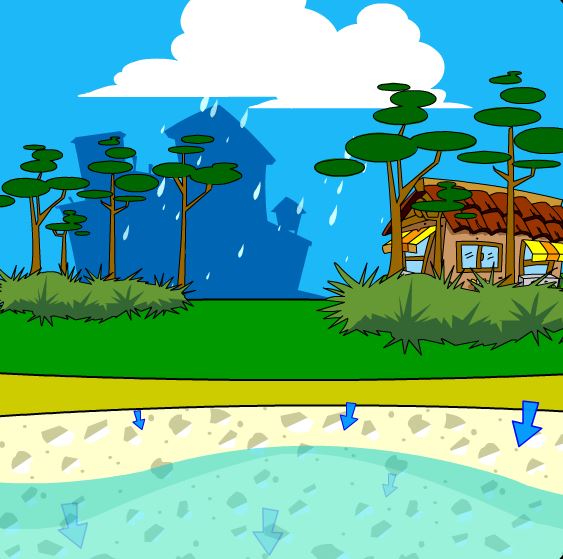
River
Floridians use billions of gallons of water from our aquifers each day. That’s a lot of water! So why doesn’t an aquifer become empty? Remember, water is a cycle. Water is replaced in the aquifer when rainwater falls, soaks into the ground, and refills the aquifer.
This process is called recharge. As water is used and not replaced through rainfall, water is pulled down from the earth’s surface. This can cause wetlands, rivers, and lakes to become drier, and in some cases, to even dry out. Our many springs are also affected.
The amount of water flowing out of springs becomes less, and some springs in Florida have even stopped flowing.
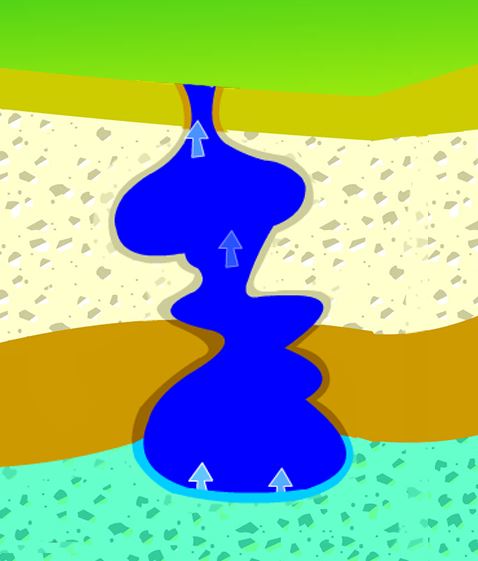
Spring
The large amount of water in the Floridan aquifer is under a great deal of pressure. This pressure can force water out of the aquifer and into new cracks and tunnels. Sometimes this water flows out naturally at the surface. These places are called springs.
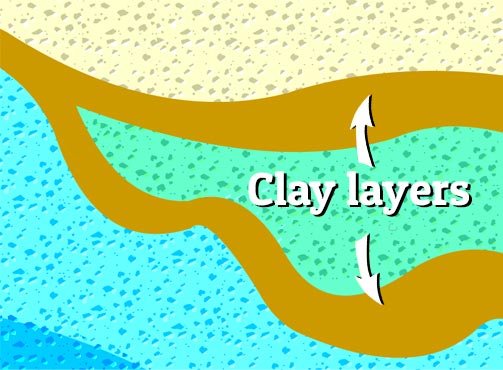
Clay layer
The layers of clay that are above and below the aquifer are called confining layers or confining zones because they confine, or hold, the water in the aquifer.
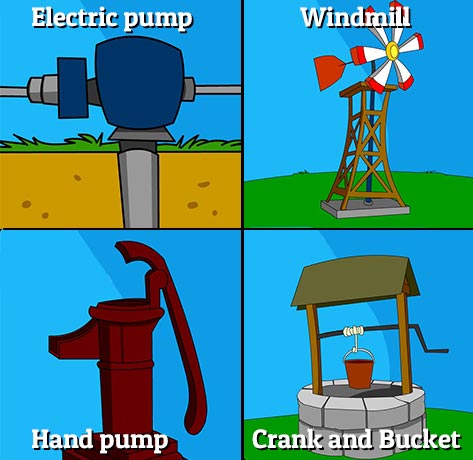
Windmill
How does groundwater get to the surface of a well? Nowadays, an electric pump moves groundwater up from a well. With some wells, windmills provide the energy to pump groundwater. In older times, a hand pump might have been used to get water from the well, or even a crank and a bucket. Methods for getting water from a well vary around the world.
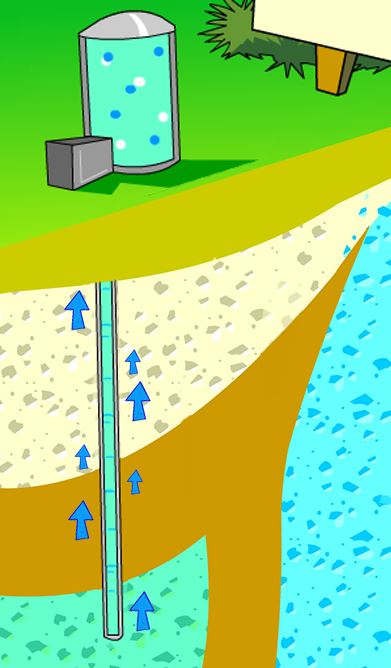
Well
Wells are used to collect water from below the ground.
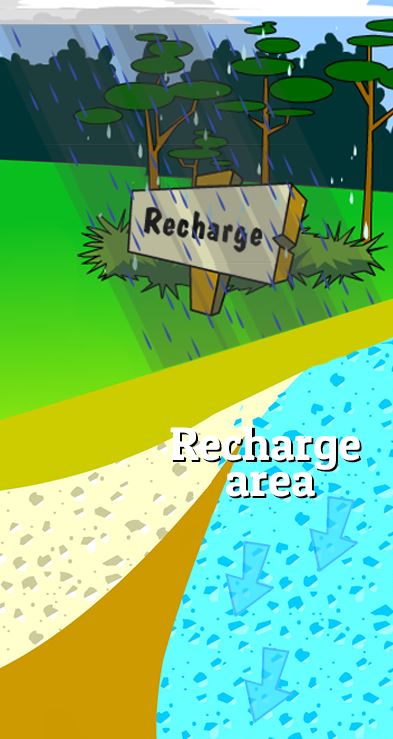
Recharge
Not all soil absorbs water in the same way. Places where water seeps into the ground and flows back into the aquifer are called recharge areas. A high recharge area is where a lot of water seeps into the aquifer. However, low recharge areas allow less water into the aquifer. There are also discharge areas where water flows back to the earth’s surface. These could be through seeps, artesian wells, or springs.
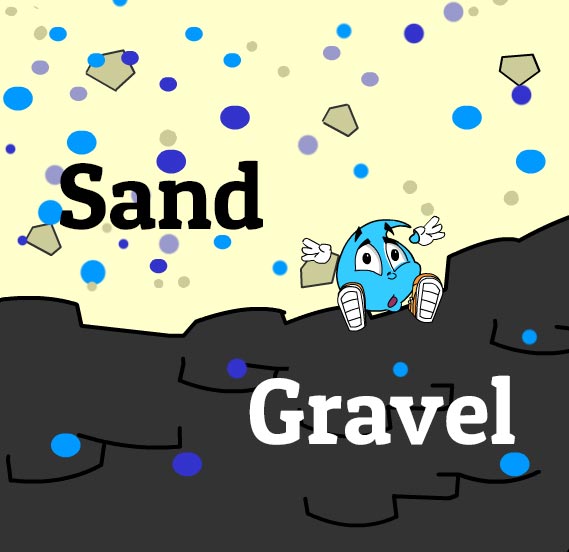
Sand and gravel layer
Sand and gravel act to filter or clean water of pollutants because of their ability to trap small particles and bacteria as the water passes through them.



